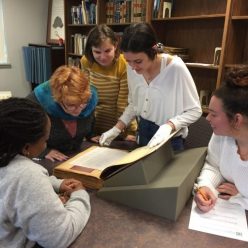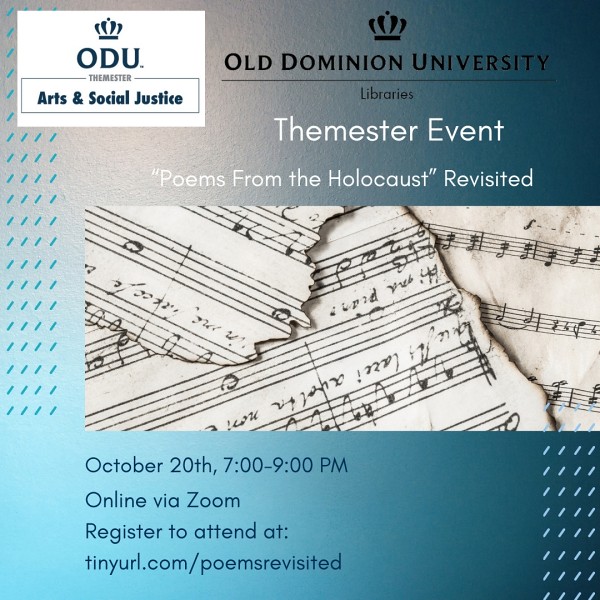by Lara Canner, Allan Blank Curator of Music Special Collections
Composer Allan Blank wrote the moving work entitled “Poems From the Holocaust” based upon children’s poetry found at the concentration camp of Terezin after itshttps://flic.kr/p/2mAdcdz liberation in 1945. The composition for mezzo-soprano, double bass, and piano features five pieces that were written to evoke an emotional response from the audience.
During World War II, the Third Reich turned the Terezin fortress located in the modern Czech Republic, into a concentration camp for Jewish writers, artists, and scholars. More comparable to a prison than an extermination camp, such as the Auschwitz concentration camp, the Nazis falsely presented the camp to the rest of the world as a “spa town” when pressed for details by the Red Cross. The reality was that Terezin acted as a collection point for transferring people to ghettos or death camps. Art classes were forbidden, but artist and educator Friedl Dicker-Brandeis brought the children together in secret, where they could create, learn, express their emotions, and hopefully regain a bit of their lost childhood. After the war, many of the writings, artwork and poems were collected by Hana Volavková, who was an art historian and Holocaust survivor.
Allan Blank included the first lines of one of the poems in his composition At Terezin, which reads: “When a new child comes everything seems strange to him. What on this ground I have to lie? Eat black potatoes? No! Not I! I’ve got to stay?” The last lines of At Terezin read: “Here in Terezin, life is hell. And when I’ll go home again I can’t yet tell.” Sadly it is possible that the young writer of this poem most likely never made it back home, of the 15,000 children imprisoned at Terezin, only 150 survived.
On October 20th at 7pm Old Dominion Libraries will host a performance of Allan Blank’s work “Poems From the Holocaust” followed by a panel discussion. The event support’s ODU’s Fall 2021 Themester’s Art and Social Justice theme by prompting listeners to never forget the tragedy of the Holocaust’s youngest victims through music.
The performance and panel discussion will be available to watch live via Zoom. Registration is open now: https://oduonline.zoom.us/webinar/register/WN_R9fiZvIUTJC3-LAF1VTXrQ




